One of Us completed two sequences at the summit of ‘Everest’, extending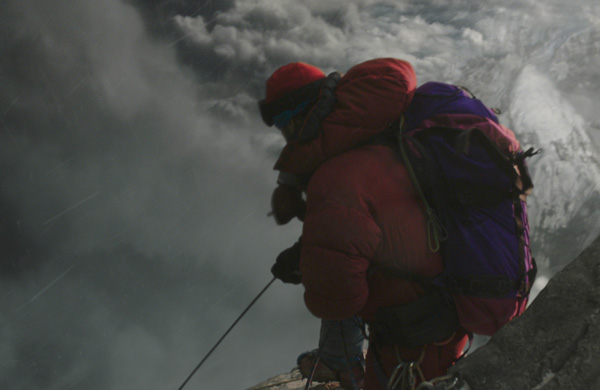
a huge 360° green screen set, and creating atmospheric particle effects
and dramatic storm cloud environments..
One of Us Reaches the Summit for ‘Everest’ |
| One of Usworked on two sequences for‘Everest’that take place at the summit above Hillary’s Step. Their work involved extending in all directions the huge green screen stage where the live action was shot, creating particle and light effects for the rarified atmosphere at those extreme altitudes, and producing dramatic storm cloud environments as the weather turns on the climbers. |
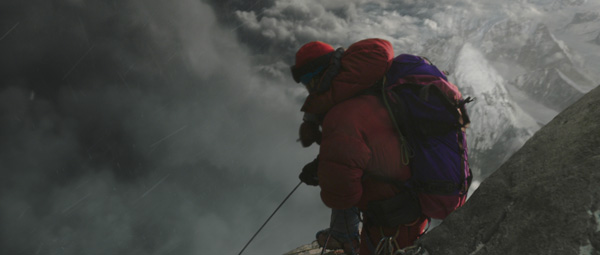 |
|
Compelling Authenticity“Although we enjoy projects where we can be involved from the earliest stages, this isn’t always possible,” saidDominic Parker, one of the team’s two VFX supervisors. “In this case we had no hand in the planning, though I like to believe that our early and well received test work had a bearing on the post. As it was, the production VFX supervisorDadi Einarssonhad done a very good job on set with the shots we were to work on, deciding and focusing on the aspects that mattered - performance above all - and leaving the finer points for us to deal with later.” The brief for One of Us was almost self-explanatory - make it look real, as a story like this one couldn’t afford to leave any doubt in the viewer's mind. Much more than any specific direction, compelling authenticity was their first target. |
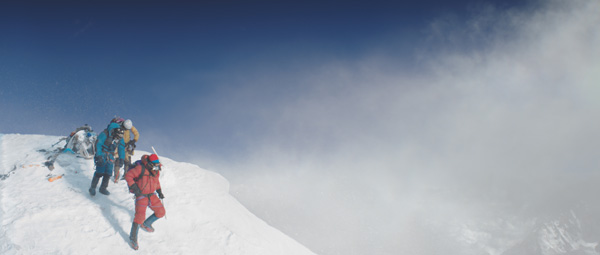 |
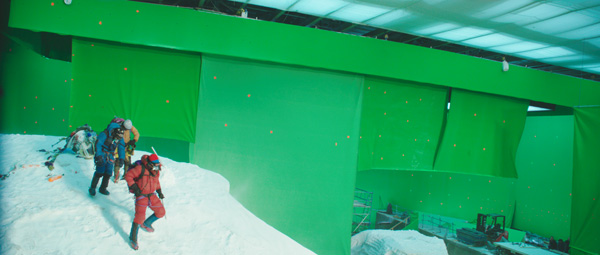 |
|
Lights – Creative CompromiseAlthough they weren't there with the production, the team recognizes the factors helping them to make their shots work. “The most important aspect was performance,” said Dominic. “However the director Baltasar Kormákur achieved those performances, it is clear that he got it right. “After this came the light, on which some creative compromise had to be made for at least a couple of reasons. First, it's simply not possible to achieve the pin sharp shadows that an infinitely distant sun would cast.” At the altitudes where the scenes take place, the intensity of this light - that is, essentially parallel rays emitted from an infinitely distant light source such as the sun - remains constant across a scene. |
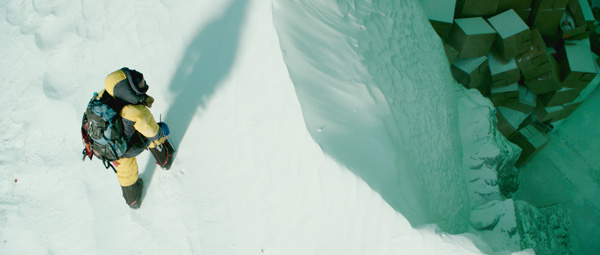 |
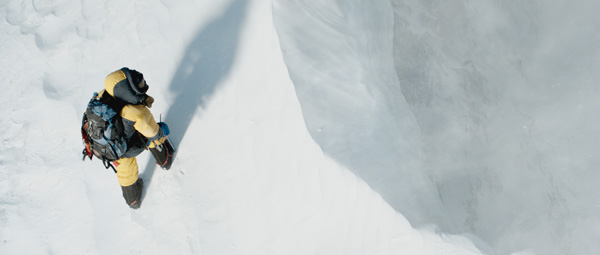 |
|
“We experimented for a long time with different exposures and balances - if we exposed for faces then the snow would blow out and blind us, while exposing to keep some detail in the terrain made the characters fall into dark shadow. Finding this look was far and away the most important and most difficult aspect of the project.” Many of the photographs they looked at from the summit were so startling in the clarity of light and in the depth of the blue of the sky that they looked unreal. The process of finding a balance, an exposure level or grade that would ring true lasted almost the entire time they worked on the show, took many discussions with the director and VFX supervisor and only really resolved itself as the final deadline approached. “I don't think this was a failure on anyone’s part,” Dominic reflected. “I think it was because it needed thorough investigation and to evolve with the shots.” |
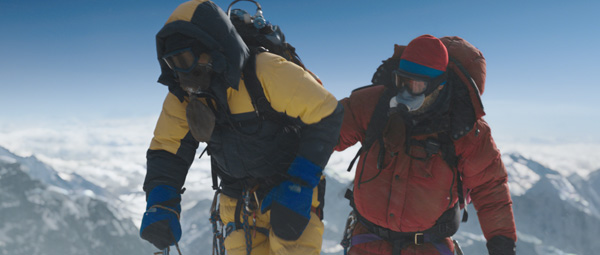 |
View from the TopMaking sure the scenes showed realistic, authentic lighting brought other challenges as well. To replace the green screens surrounding the live action, One of Us produced digital matte paintings in a mixture of 2D, 3D and 2.5D formats. Dominic said, “Views of anything not a part of Everest itself were so far away that they would never show enough parallax to require more than a simple 2D background. But the extensions to the summit ridge, the summit and all the closer elements needed some dimension, and a shot by shot triage analysis of the images determined if this needed to be 2.5 or 3D. The work for these was split between Nuke and Maya. “Our matte painting work began with a high resolution, 360° DMP of the Himalayas as seen from the summit, supplied byReykjavik Visual Effects. We covered about 270° of this view in our shots. Although the entire narrative rests on the activities of characters who reach the summit too late in the day to descend safely before dark, the photographs making up this matte painting all appear to have been taken at a time of day when climbers could still have descended safely. |
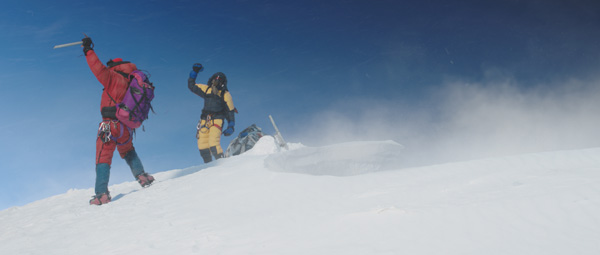 |
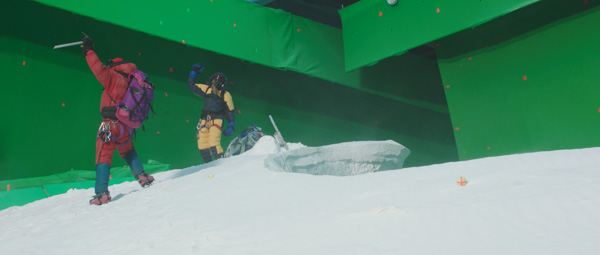 |
|
Atmospheric EnergyAdding atmosphere to the shots was as essential a part of setting the scene at the summit as correcting the light. The reference footage One of Us had to work with shows brilliant light, sharply contrasted with shadow, while in the atmosphere, the sun hitting tiny particles of ice results in fast-moving layers of mist, within which Dominic says pings of light flash so briefly that they didn't have time to create motion blur. “But the reference photography of this complex mixture of elements so clearly conveys the brilliant and harsh atmosphere - we knew this was a key component in our work,” he said. “We devoted a lot of our design time to find the right balance of layers. We had a few practical elements shot against black, but our shots were so specific in terms of angle, camera move and wind direction that we found it hard to use the practical elements. |
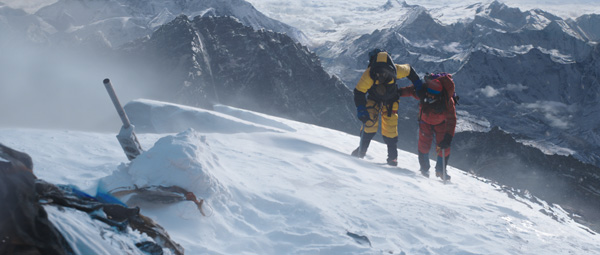 |
|
Storms Inside OutFor their storm cloud environments, the team received still more reference material from RVX, including high resolution GoPro footage that showed the sky at the edge of the atmosphere as very deep vivid blue. “The key reference Dadi gave us was a YouTube clip of a storm over the sea in Belgium,” said Dominic. “What we noticed was that it was at once very real and also very much like a monster. Baltasar said to us at one point that the storm is the baddie - it's like a character, and a very malign one. “When we looked at this reference at first, we thought, ‘That's a big storm - how on earth are we going to do that?’ Nevertheless, certain aspects gave us a way to get started. One factor is that, from a distance, the actual internal movement is relatively slow. We figured that for most of our storm shots we could use an AAMP, anaugmented animated matte painting. By using some simulated elements together with some adaptions of our own high res photography, we achieved the ominous effect that the director wanted.” |
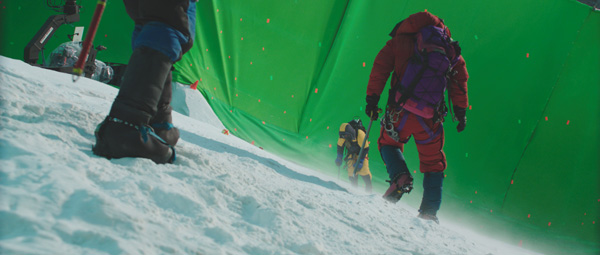 |
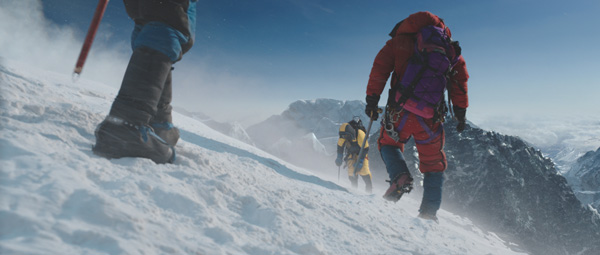 |
|
“Actually, he was the one who gave this shot its master stroke - he asked for a couple of lightning flashes deep inside the cloud just before it hits. With all of the hard work behind us, this effect was so easy to implement and lifted the shot so much. It was a lesson that one should always strive to find that final detail that will make a good shot better.” www.weacceptyou.com |


















